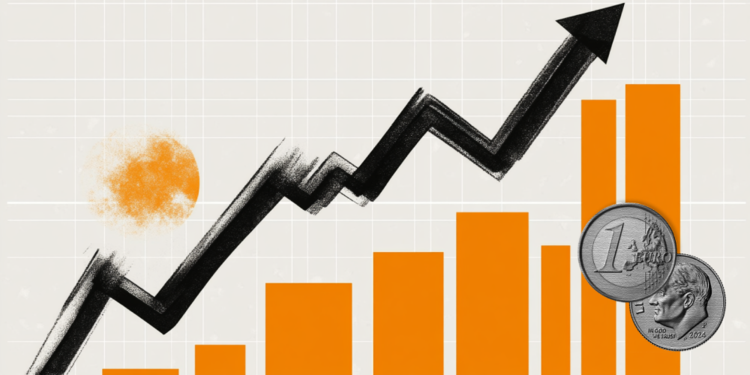“We are walking towards an abyss in pitch black. We know we are heading to the precipice, but when that will happen we will only know when we fall.” Researcher at Oxford and Lancaster Universities and one of the coordinators of the Sustainable Amazon Network, biologist and ecologist Erika Berenguer uses this analogy when asked when the Amazon rainforest will reach the “point of no return”.
Conceptually, this will happen when the Amazon ceases to function as expected for what it is: a dense umbrophilous forest – that is, an extremely humid forest with abundant vegetation cover. In environmental jargon, that would be when the biome loses its systemic services. “When this happens, the forest will lose its capacity to generate rain,” explains Berenguer.
The Amazon forest should be at the epicenter of the COP-26 discussions on Tuesday, the 2nd, when a meeting is scheduled between government officials, businessmen, investors and leaders of non-governmental organizations to discuss the relationship between the preservation of biomes, the sustainable land use and the need to maintain the global temperature target. The president of Brazil, Jair Bolsonaro, does not participate in the climate summit.
It is worth remembering why there is so much talk about the Amazon when it comes to climate change, the environment and biodiversity. The Amazon is home to a relevant portion of the already known biodiversity: 22% of vascular plant species, 14% of birds, 9% of mammals, 8% of amphibians and 18% of fish that inhabit the tropics. In parts of the Andes and Amazonian lowlands, a single gram of soil can contain more than 1,000 genetically distinct fungal species.
Furthermore, the diversity of fish in its rivers represents approximately 13% of the world’s freshwater fish, 58% of which are found nowhere else on Earth. These data are from the Science Panel for the Amazon (SPA), an unprecedented initiative convened by the United Nations Sustainable Development Solutions Network (UNSDSN).
The SPA is made up of more than 200 scientists and researchers from eight Amazon countries, French Guiana and other global partners. The final report of this effort will be presented at COP-26, on November 12th.
The SPA’s preliminary report also states about the Amazon: “The forest acts like a giant ‘air conditioner’, reducing the earth’s surface temperatures and generating rain. It exerts a strong influence on the atmosphere and circulation patterns, both inside and outside the tropics.”
According to the text, up to 50% of the precipitation in the Amazon basin is regionally recycled, which represents a high flow of moisture from the oceans to the interior. In addition, the basin provides the largest river discharge on Earth: from 16 to 22% of the total river flow to the oceans.
Yes, it rains a lot in the Amazon because the trees that exist there work as efficient water pumps, “pulling water from the ground and transpiring into the atmosphere”, explains the researcher. Thanks to this diurnal mechanism, 80% of what rains in the biome is the result of recycling water from there.
“The point of no return would be when the Amazon reaches a stage of deforestation, and also because of climate change, which makes it no longer possible to maintain sufficient vegetation cover. As a result, there will no longer be the necessary rain recycling to maintain the forest”, says Berenguer. “She would die for lack of rain.”
Studies indicate that humans have already destroyed about 17% of the Amazon. The preliminary SPA report says that approximately 17% of Amazonian forests were converted to other uses, and at least 17% more were degraded. The problem is much deeper than it sounds. The non-return from the Amazon will be a catastrophe. To Brazil. And to the world.
Impacts
Starting from the beginning. This profusion of natural water pumps that form the forest does not only guarantee the daily rainfall in the biome. It influences the entire rainfall regime in Brazil — and in other countries in the region. The deregulation of this once-perfect little machine harms the water reservoirs. Consequences are already being felt, with water crises that affect the supply and production of hydroelectric energy.
But that’s not all. Rainfall—preferably with the appropriate volume and constancy for each season—is essential for agriculture. They interfere directly with each citizen’s plate.
“Less trees, less water vapor in the atmosphere, less rain. This all makes temperatures get higher, dry seasons are longer. It causes a negative impact on the forest itself, which is more susceptible to degradation, it loses its balance”, observes forestry engineer Argemiro Teixeira Leite Filho, a professor at the Federal University of Minas Gerais (UFMG).
Leite Filho recalls that since the 1980s, the effects of this massive mortality of trees in the Amazon have been discussed in academia. And therein lies the global concern of history: this phenomenon, caused by human action, has an immense potential to aggravate climate change – and harm agribusiness.
In a study published in May this year, Professor Leite Filho estimated that, “in a scenario of weak governance, the southern region of the Brazilian Amazon could lose 56% of its forests by 2050. Reducing deforestation prevents agricultural losses in this region of up to $1 billion annually”.
“With the capacity to absorb carbon less and less, the service that the Amazon forest provides to the planet is decreasing. And this increases the climate crisis on a global scale”, stresses biologist and ecologist Adriane Esquivel Muelbert, a researcher at the University of Birmingham.
The blind path towards the cliff, it turns out, is not a straight line. It’s another good definition of a vicious cycle. “Deforestation or a drier climate due to global warming can cause tree mortality, creating an increasingly drier climate that causes more and more tree mortality, in a harmful cycle that is drier and with less vegetation cover”, explains the agricultural engineer Marcos Heil Costa, professor at the Federal University of Viçosa.
“From a certain point, the point of no return, the climate is not rainy enough to be able to support a tropical forest, and the remaining vegetation is no longer able to maintain the previous rainy climate”, he adds.
Irreversibility
Several recent studies have indicated that parts of the biome, especially on the southern and eastern borders of the forest, are already at the beginning of this process. Among scientists, there is no consensus. But it is more likely that the Amazon will not suddenly collapse, but that it will be a gradual process, region by region.
In those areas where the imbalance has been observed, even if the deforested areas are left without human interference from now on, the forest by itself would not be able to remake itself. For the simple matter that there are not enough natural conditions to support a dense umbrophilic formation. And this phenomenon ends up swallowing, by the edges, what is left of the Amazon.
Today’s adults grew up with the idea that the Amazon problem was already very serious, but reversible. And from here on out? There is still no answer.
According to Muelbert, for a very simple reason: the experiment, in this case, is something very unique. It can only be done once. If it breaks, it breaks. As we only have one Amazon forest, the damage that human beings are causing in it, despite projections made by scientists, only has the consequences confirmed when it has already been done. And then there may be no going back.
“We had this idea that in nature everything goes back to normal, but the problem now is that the world climate is changing along with it…”, comments the researcher. But she has some hope. “The forest is very resilient and has a very high capacity for recovery.”
salvation recipe
A few steps from the cliff, we have alternatives. Although everything indicates that humanity is heading towards this abysmal maddening leap, there are those who see possibilities. Seeing the size of the problem is an important step. Reverse the course so as not to fall, a smart and urgent decision.
In the case of the Amazon, researchers know the recipe. And do not get tired of repeating it. Stopping deforestation is the main thing. Not only does not increase. Not just decrease. “It is unacceptable to think about an optimistic future scenario without thinking about zeroing deforestation. There is no need to expand areas of cultivation and livestock in the Amazon, the main drivers of deforestation. Abandoned deforested areas can even be used for forest regeneration”, defends Leite Filho.
“We need to make degraded regions of the forest return to absorbing more carbon than emitting, this would be the best scenario”, he continues.
Another thing to do is not to forget that the disease that affects the Amazon is linked to the global context of climate change. One thing influences the other, actually. That’s where the second urgent need comes in: zero net greenhouse gas emissions.
“Unfortunately, there is a lack of political will for this to be done. Science needs to be the flagship for such implementations”, says Leite Filho.
Individual citizens can also contribute. Consuming products more responsibly, for example. Seeking to reduce their own carbon footprint. And supporting companies and leaders who have environmentally correct attitudes.
“The first thing is to vote for candidates, both executive and legislative, from the federal to the municipal level, who have an agenda predicting a reduction in deforestation and greenhouse gas emissions. A municipal legislation that provides for emission reductions takes effect. It is not necessary to be in the Amazon to help avoid the point of no return,” says Berenguer.
Reference: CNN Brasil







